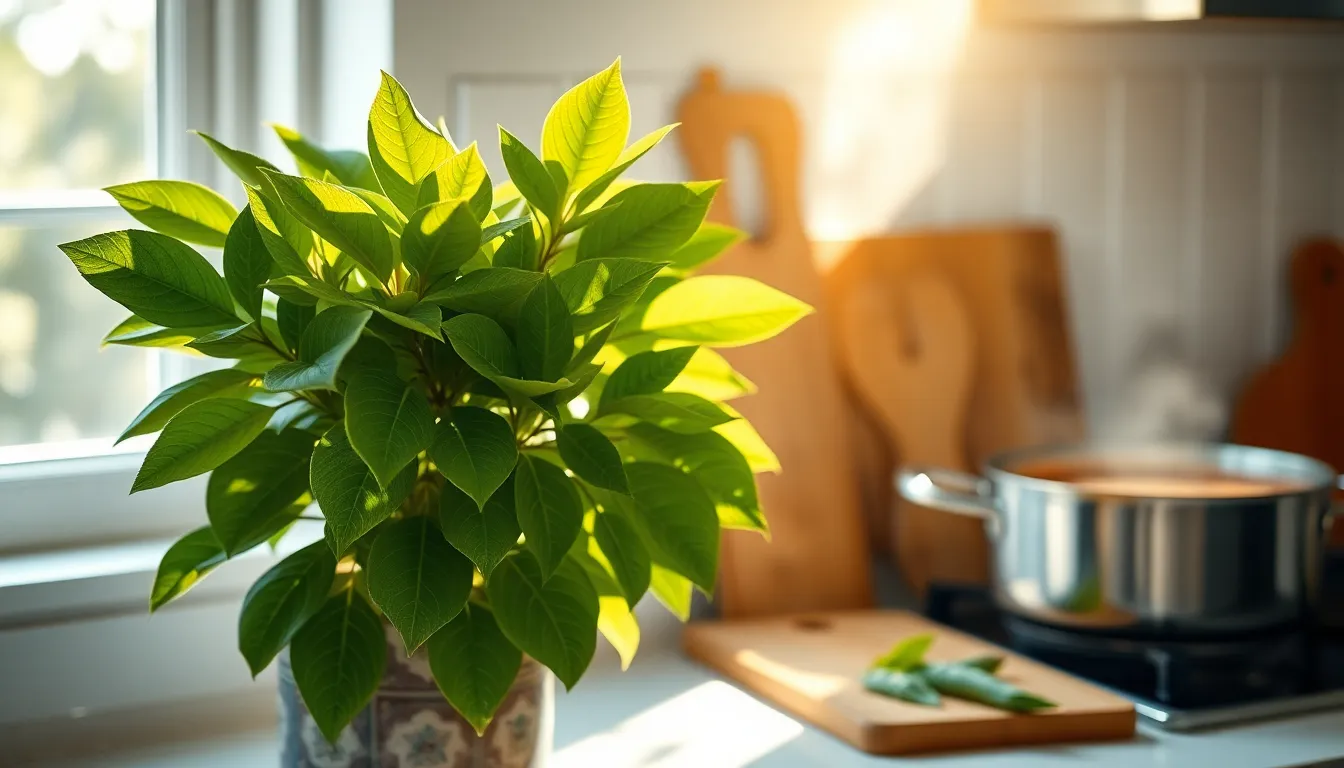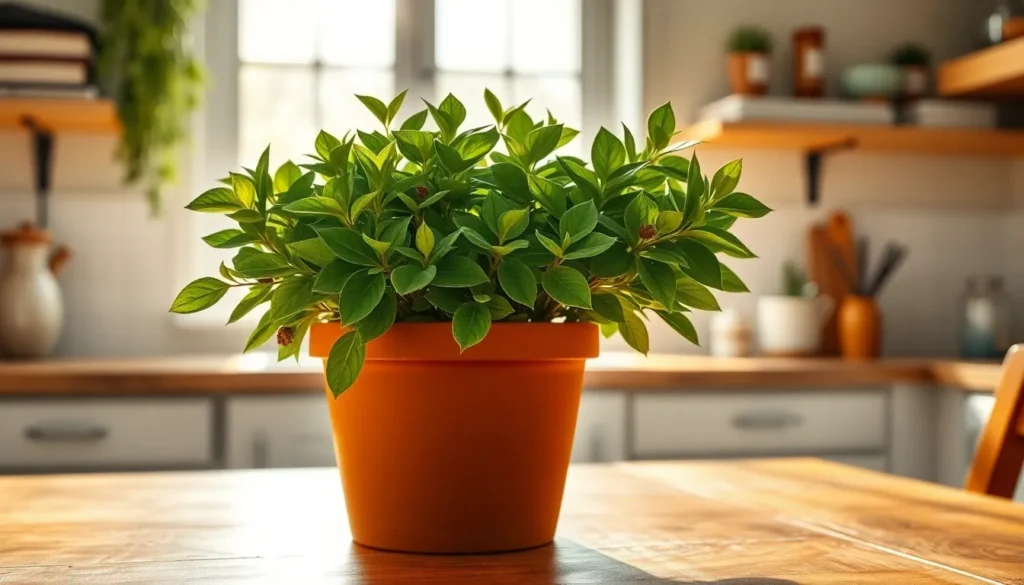Bay leaf plants are a must-have for any herb garden, offering both culinary and aromatic benefits. Known for their fragrant leaves that enhance a variety of dishes, these plants are also prized for their easy care and resilience. Whether you’re a seasoned gardener or just starting out, knowing where to buy a bay leaf plant can make all the difference in your gardening experience.
With numerous options available, from local nurseries to online retailers, finding the perfect bay leaf plant is easier than ever. The right source ensures not only quality plants but also helpful tips for growing and maintaining them. This guide will explore the best places to purchase bay leaf plants, helping enthusiasts bring this versatile herb into their homes.
Table of Contents
ToggleUnderstanding Bay Leaf Plants
Bay leaf plants, scientifically known as Laurus nobilis, thrive in both indoor and outdoor settings. These evergreen shrubs, reaching heights of 6 to 40 feet, possess aromatic leaves used in cooking and traditional medicine. The leaves carry a distinct flavor profile, lending depth to soups, stews, and sauces.
Bay leaf plants prefer well-draining soil and ample sunlight, typically needing six hours of direct sunlight daily. They grow best in USDA hardiness zones 8 to 10, although they may be cultivated indoors in colder regions. Consistent watering, without waterlogging, encourages healthy growth. Regular pruning promotes bushier growth and allows easy access to the leaves.
Propagation methods include seed planting and stem cuttings. Seeds require a warm, moist environment to germinate, while cuttings thrive in a well-draining mix. After root establishment, plants adapt easily to their environments.
Bay leaf plants provide culinary uses, aesthetic value, and medicinal benefits. Their robust nature allows them to flourish with proper care, making them a popular choice for herb enthusiasts.
Benefits of Growing Bay Leaf Plants

Growing bay leaf plants offers numerous advantages, ranging from culinary applications to aromatic qualities. Understanding these benefits can enhance one’s gardening experience and use of this versatile herb.
Culinary Uses
Culinary uses of bay leaves include flavoring a variety of dishes. Bay leaves enhance soups, stews, sauces, and marinades with their unique, robust taste. Chefs commonly use them to infuse flavor into slow-cooked meals. Fresh bay leaves possess a more subtle aroma than dried leaves yet add depth to culinary creations. It’s essential to remove the leaves before serving, as they can be tough and sharp.
Aromatic Qualities
Aromatic qualities of bay leaves contribute to their appeal in home gardening. Their essential oils release a pleasant fragrance that can elevate indoor air quality. Many people find the scent calming and uplifting, making bay leaves a great addition to herb gardens. Beyond their kitchen uses, bay leaves can also serve as natural air fresheners when dried and placed in drawers or cupboards.
Where to Buy Bay Leaf Plant
Finding quality bay leaf plants can significantly impact their growth and culinary benefits. Below are reliable sources for purchasing these versatile herbs.
Local Nurseries
Local nurseries often provide healthy bay leaf plants suited to the regional climate. These establishments typically offer a selection of culinary herbs, including bay leaves. When purchasing from a nursery, buyers can inspect the plants for signs of health, such as vibrant green leaves and robust stems. Furthermore, nursery staff can offer valuable growing advice and care tips tailored to local conditions. Look for reputable nurseries that specialize in herbs to ensure quality.
Online Retailers
Online retailers present a convenient option for acquiring bay leaf plants, particularly when local options are limited. Websites such as Amazon, Etsy, and specialized garden supply stores list various bay leaf plants. Always verify seller ratings and customer reviews, ensuring positive feedback on plant quality and shipping practices. Many online retailers provide detailed care instructions, enhancing the buying experience. Additionally, comparing prices across various platforms can help identify competitive deals on bay leaf plants.
Tips for Care and Maintenance
Caring for bay leaf plants requires attention to several key aspects to ensure healthy growth.
- Soil quality: Use well-draining soil that retains moisture without becoming waterlogged. A mix of potting soil and perlite or sand works well.
- Watering: Water consistently, allowing the top inch of soil to dry out between waterings. Overwatering can lead to root rot, while underwatering can cause leaf drop.
- Light exposure: Position the plant in a spot that receives about six hours of direct sunlight daily. If grown indoors, a south-facing window is ideal.
- Fertilizing: Fertilize every four to six weeks during the growing season with a balanced liquid fertilizer. Dilute it to half the recommended strength to avoid over-fertilization.
- Pruning: Prune the plant regularly to maintain shape and encourage bushier growth. Remove any dead or yellowing leaves promptly.
- Pest control: Monitor for common pests like aphids and spider mites. If found, treat the plants with insecticidal soap or neem oil.
- Temperature: Maintain temperatures between 60°F and 80°F. Protect the plants from frost, as they thrive in USDA hardiness zones 8 to 10.
- Humidity: Regularly mist the leaves or place a tray of water nearby to increase humidity, especially in dry indoor conditions.
Implementing these care tips helps cultivate robust bay leaf plants that contribute both culinary and aromatic benefits.
Finding the right bay leaf plant can elevate culinary experiences and enhance home environments. Whether opting for a local nursery or exploring online options, quality is key. With the right plant in hand and proper care, anyone can enjoy the aromatic and flavorful benefits of bay leaves. By incorporating this versatile herb into their gardens or kitchens, they’ll not only enrich their dishes but also create a soothing atmosphere at home. Embracing the journey of growing bay leaf plants can lead to rewarding experiences for both novice and seasoned herb enthusiasts.





